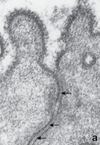Exam 1 Material Flashcards
Marfan syndrome
type?
clinical features?
genetic principles?
Autosomal dominant
skeletal abnormalities
plietropic, new mutation, high dad age=high de novo mutation risk
Prader Willi
type?
clinical features?
genetic principles?
Imprinting
Uniparental disomy: maternal UBE3A disomy. no paternal SNRPN
obesity, underdeveloped genitalia
familial hypercholesterolemia
type?
clinical features?
genetic principles?
Autosomal dominant
LDL receptor deficiency
haplo-insufficiency
MI
LDL-1/LDL2 ratio high or low?
Ck-MB vaule?
Severity is a reflection of what ratio?
Cell loss disorder
high LDL-1/LDL-2 ratio.
Ck-MB > 3%
severity: % of Ck-MB/total Ck ratio.
Camptothecin
Type/Trats
Mechanism of action/Targets?
Anti-cancer
inhibits Topoisomerase I
Respiratory distress syndrome
L/S ratio not mature?
role of phospholipid in surfactant
DPPC deficiency in pre-me babies
L/S ratio: <1.5 NOT mature
Azidothymidine (AZT) / Zidovudine
Type?
Treats?
Mechanism of action?
Targets?
Anti-viral nucleoside analogue of deoxythymidine. no OH group. triple N instead.
HIV: prolongs life in HIV affected individuals and redce mom to baby transmission by >20%.
incorporated into dsDNA so transcription can’t continue.
Inhibits viral reverse transcriptase so virus
Vidarabine Adenosine Arabinoside: araA
Type?
Treats?
Mechanism of action?
Targets?
Anti-viral adenosine analogue
Herpes Simplex and Anti-neoplastic (relapsed childhood acute lymphoblasyic lukemia agent)
Planar configuration prevents DNA elongation, yielding premature termination.
Inhibits viral DNA polymerase
Cytochalasins
Type?
Treats?
Mechanism of action?
Targets?
Fungal product
Treats nothing. this is a fungal infection. stay away.
blocks actin polymerization
inhibits cell movement, promotes apoptoosis
Initiation factors
aid in the formation of the 30S initiation complex.
RNA Pol I
transcribes rRNA
Fragile X
type?
clinical features?
genetic principles?
X-linked Triple repeat CGG
can’t speak, anxiety, temper tantrums.
Anticipation
Systemic Lupus erethematosus
type?
clinical info?
symptoms?
cell acumulation disorder.
autoantibidies to U1 RNA splisosome component and histone and topoisomerase.
results in fatigue, arthritis, fever, skin rash, kidney problems
regions of a prokaryotic gene (transcription)
promoter
RNA coding sequence
terminator
Mycophenolic acid
Type of inhibition and which enzyme?
Function of enzyme?
Mechanism of action?
End result?
Reversible, uncompetitive inhibitor of inosine monophosphate dehydrogenase
IMP->xanthosine monophosphate->GMP
deprives rapidly proliferating T and B cells of key components of nucleic acids
prevents graft recognition
Metaplasia
causes?
clinical features?
Tissues affected?
REVERSIBLE change of cell differentiation
Increased risk for dysplasia and neoplasia
resp. epithelium, cervical epithelium (columnar to stratified squamous), esophagus epithelium (stratified squamous to columnar).
Dysplasia
causes?
clinical features?
Tissues affected?
rapid multiplication of cells, may demonstrate genetic abnormalities
failure of maturation and differentiation: persistent cellular atypia, high nuclear/cytomlasm ratio, large nuclei with dark staining chromatin
cervix and skin
Nitroprusside
Type of inhibition and which enzyme?
Function of enzyme?
Mechanism of action?
End result?
Metabolized to NO -> activates guanylyl cyclase
GTP->cGMP
cGMP causes smooth muscle relaxation, platelet aggregation and aids in visual system
vasodilation
Trimethoprim
Type of inhibition and which enzyme?
inhibits dihydrofolate reductase.
MELAS
type?
clinical features?
genetic principles?
Mitochondrial
encephalopathy, lactic acidosis, stroke-like episodes
only from mother, heteroplasmy
Aplastic Anemia
Cell loss disorder
5’ fluorouracil
Type of inhibition and which enzyme?
Function of enzyme?
Mechanism of action?
End result?
competitively inhibits thymidylate synthase by being converted into dFUMP
dUMP->dTMP
Given with thymidine to increase toxicity in cancer cells. Incorporated into cancerous mRNA making it more toxic to cancer cells.
Anticancer
Novobiocin Courmarin family
Type?
Treats?
Mechanism of action? (target is same as mechanism)
Antbiotic
Staph infections and MRSA
Inhibits DNA gyrase
Phosphatase
Removes one phosphate from 5’ end of RNA








